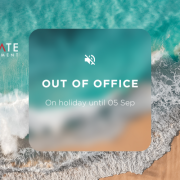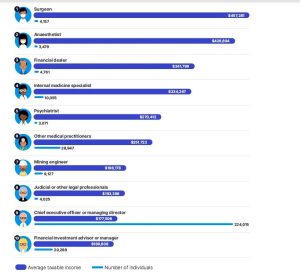Ace your job interview: Our top tips
Landing a job interview is an exciting milestone in your career journey. It’s your chance to stand out, highlight your skills, and show why you’re the best candidate for the role. But it’s also the stage where preparation and confidence are key to success.
At Elevate Recruitment, one of Queensland’s leading recruitment agencies, we know what it takes to impress potential employers. Director Sean Jeddaoui explains, “This is often the final round before a decision is made, so it’s time to bring your A-game.”
To help you succeed, we’re sharing some common job interview mistakes to avoid and expert advice on how to shine.
Mistake #1: Poor Time Management
Arriving late to an interview can leave a negative impression, even if it’s unintentional.
What to do instead:
- Plan your journey in advance, whether it’s navigating traffic or setting up your virtual interview tech.
- Do a trial run to ensure everything goes smoothly. If something unexpected happens, always call ahead to let the interviewer know, they may prefer to reschedule if you are considerably late.
Mistake #2: Dressing Inappropriately
First impressions matter, and your outfit plays a big role in how you’re perceived.
What to do instead:
- Choose attire that matches the company’s culture, but aim for one step above.
- Pay attention to grooming and personal presentation to show professionalism.
Mistake #3: Lack of Preparation
Walking into an interview without understanding the role, the company, or the industry sends the wrong message.
“If your answers feel forced or vague, it can be hard for the employer to connect with you,” says Jeddaoui.
What to do instead:
- Research the company’s mission, values, and recent achievements.
- Prepare answers to common questions, like Tell me about a time you handled conflict at work or How did you manage multiple priorities under pressure?
- Use the STAR method (Situation, Task, Action, Result) to structure your responses.
Employers appreciate candidates who show genuine interest in their business and come prepared with ideas.
Mistake #4: Rambling or Oversharing
Nerves can lead to talking too much or providing irrelevant details.
What to do instead:
- Keep your answers concise and focused on the question. If you need a moment to gather your thoughts, don’t be afraid to pause.
Mistake #5: Overselling Yourself
Confidence is important, but appearing overly boastful can be off-putting.
“Employers value authenticity and a willingness to learn,” explains Jeddaoui.
What to do instead:
- Be honest about your skills and achievements while showing humility and a desire to grow.
Mistake #6: Speaking Negatively
Criticising previous employers or roles reflects poorly on you as a candidate. Potential employers may wonder if you had something to do with the negative outcome.
What to do instead:
- Highlight the positives, such as what you’ve learned or how challenges you have faced have prepared you for future success.
Mistake #7: Failing to Stand Out
Recruiters and employers may interview several candidates in a day, so it’s crucial to leave a lasting impression.
What to do instead:
- Showcase your personality and unique skills. Share specific examples that demonstrate your value and make you memorable.
Why Work with Recruitment Agencies in Brisbane or the Gold Coast?
Partnering with a recruitment agency like Elevate Recruitment can make all the difference in your job search. Based on the Gold Coast, but looking after roles nationwide, we specialise in matching top talent with leading employers. Our recruiters provide personalized advice, interview coaching, and insider tips to help you succeed.
Whether you’re seeking career opportunities in Queensland, NSW or the Northern Territory, we’re here to support you every step of the way.
Ready to land your dream job? Get in touch with Elevate Recruitment today and take the next step in your career.










